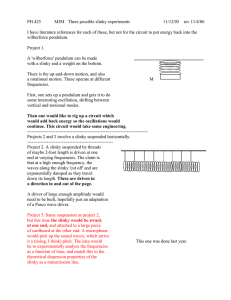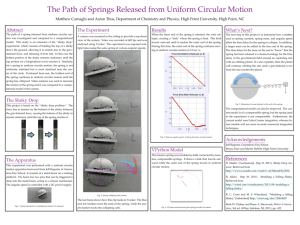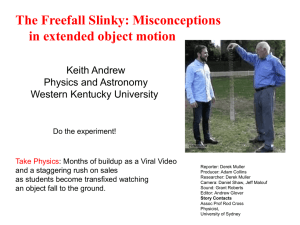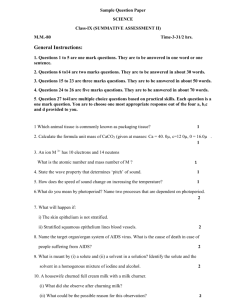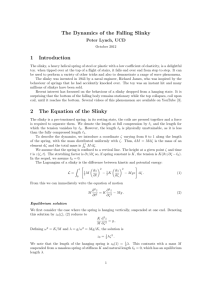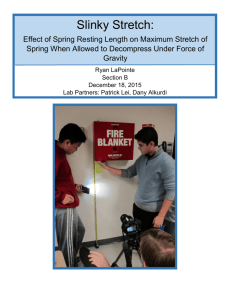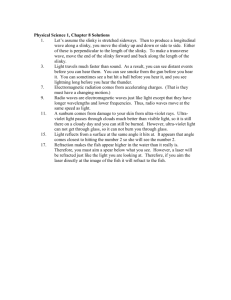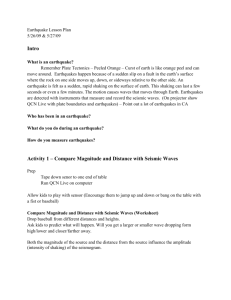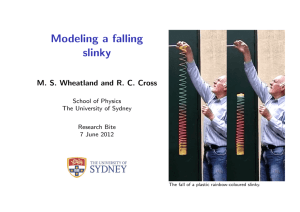Lab 4 (associated with Hw 4): Period of vibration of a slinky
advertisement
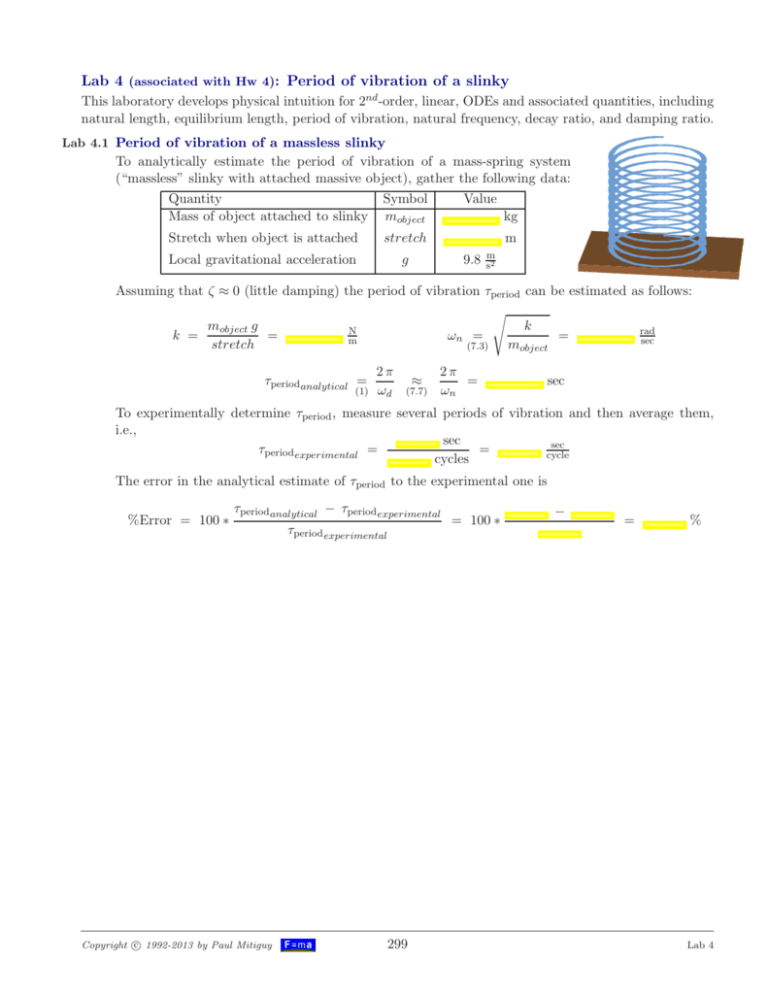
Lab 4 (associated with Hw 4): Period of vibration of a slinky This laboratory develops physical intuition for 2nd -order, linear, ODEs and associated quantities, including natural length, equilibrium length, period of vibration, natural frequency, decay ratio, and damping ratio. Lab 4.1 Period of vibration of a massless slinky To analytically estimate the period of vibration of a mass-spring system (“massless” slinky with attached massive object), gather the following data: Quantity Symbol Value Mass of object attached to slinky mobject kg Stretch when object is attached stretch Local gravitational acceleration m g 9.8 m s2 Assuming that ζ ≈ 0 (little damping) the period of vibration τperiod can be estimated as follows: mobject g k N rad = ωn = = k = m sec stretch mobject (7.3) τperiod analytical = (1) 2π ωd ≈ (7.7) 2π = ωn sec To experimentally determine τperiod , measure several periods of vibration and then average them, i.e., sec sec = τperiod experimental = cycle cycles The error in the analytical estimate of τperiod to the experimental one is %Error = 100 ∗ τperiod analytical − τperiod experimental c 1992-2013 by Paul Mitiguy Copyright τperiod experimental 299 = 100 ∗ − = % Lab 4 Lab 4.2 A better model: Period of vibration of a massive slinky The previous experiment showed how to experimentally determine the period of vibration (τperiod ) of a massive objected suspended by a “massless” slinky. To account for modeling errors associated with the mass of the slinky, the period of vibration is recalculated with the following data: Quantity Mass of object attached to slinky Symbol mobject Natural length of slinky (completely unstretched) Value kg Ln m Equilibrium length of vertical slinky without attached object LeqA m Equilibrium length of vertical slinky with attached object LeqB Local gravitational acceleration g m 9.8 m s2 By using the equations which govern the static equilibrium lengths of the slinky (with and without the attached object), one can estimate τperiod . The process consists of the following steps. • Measure Ln , the slinky’s natural length (the slinky’s length when it is completely unstretched). • This experiment models the slinky’s mass as a particle of mass mspring attached to the end of the slinky. This is the mass required to stretch the slinky to LeqA . Carefully measure LeqA . • Attach an object of known mass to the slinky. Measure LeqB (the new equilibrium length). • Show how to use F = ma to calculate k (the slinky’s linear spring constant) and mspring . Ln LeqA LeqB k = mspring = mobject g LeqB − LeqA k (LeqA − Ln ) g N m = = kg • Calculate the motion’s natural frequency ωn and τperiod analytical (the mathematically determined period of vibration). k rad = = ωn sec mspring + mobject ∆ ωd = ωn 1 − ζ 2 ≈ ωn (when ζ is small) (7.7) τperiod analytical = (8.1) 2π ≈ ωd sec • Measure τperiod experimental (the experimentally determined period of vibration) by timing several periods of vibration and then averaging them. τperiod experimental = c 1992-2013 by Paul Mitiguy Copyright 300 sec = cycles sec cycle Lab 4 • Calculate the percentage error in the analytical determination of τperiod . Error = 100 τperiod experimental − τperiod analytical τperiod experimental = % • Using the same data, calculate the percentage error in the analytical determination of τperiod when mspring is assumed to be zero. Error = 100 τperiod experimental − τperiod analytical τperiod experimental = % • The error in calculating τperiod is smaller/larger (circle one) when one assumes mspring = 0. • Make a rough sketch that is useful for experimentally measuring the decay ratio. decayRatio ≈ • Make a rough estimate of the damping ratio ζ. (See Homework 4.4 for details). ζ ≈ c 1992-2013 by Paul Mitiguy Copyright 301 Lab 4
